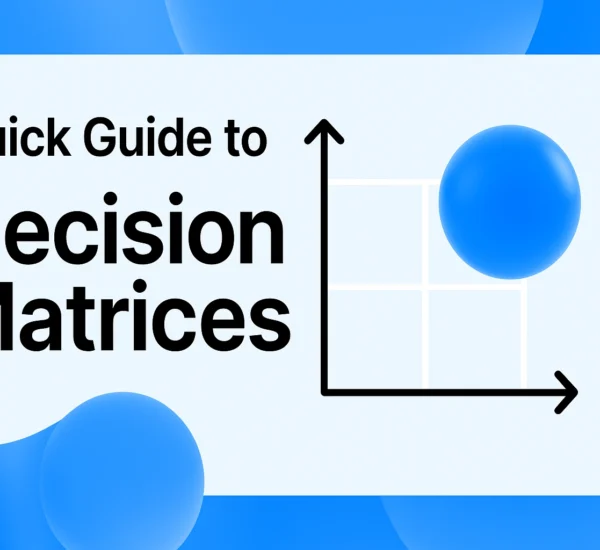Accuracy is about how close results are to the true value, whereas precision refers to the consistency of achieving similar results. A system can be accurate, precise, both, or neither, influencing effective decision-making and project execution.
- Understanding Accuracy and Precision
- Deep Dive: Accuracy vs. Precision
- The Bullseye Analogy
- Tracking and Measuring Accuracy and Precision
- Real-Life Applications
- Conclusion: Striking the Balance
- Summary
- What is the difference between accuracy and precision?
- Accuracy vs. precision: the bullseye example
- What is accuracy?
- What is precision?
- How do you track and measure accuracy and precision?
- Examples of accuracy and precision
- Accuracy vs precision: Which is more important?
- Accuracy vs precision: How to measure and improve both
- Tools and technologies for measurement
- Accuracy vs precision: Real-life business applications
- Precisely accurate, or accurately precise?
Understanding Accuracy and Precision
Introduction to Key Concepts
In any task, from project management to data analysis, two critical factors can determine success: accuracy and precision. Accuracy reflects how close your results are to the true value, while precision indicates how consistently you can achieve the same results. Think of accuracy as hitting the bullseye on a dartboard and precision as having your darts land close together.
Why Accuracy and Precision Matter
Balancing accuracy and precision can be the difference between smooth operations and constant setbacks. Accurate data helps you identify meaningful trends, while precise data ensures consistency over time. The International Organization for Standardization (ISO) emphasizes that both are essential for reliable insights.
- Accuracy: Closeness to the true value.
- Precision: Consistency in results.
A system can be accurate but not precise, precise but not accurate, or ideally, both. Understanding these concepts ensures informed decision-making and effective project execution.
For those in the project management sphere, exploring different methodologies might help you find a balanced approach between accuracy and precision.
Deep Dive: Accuracy vs. Precision
Exploring Accuracy
Accuracy is about proximity to a true value. For instance, in project management, accurate timelines and budgets reflect actual outcomes. As per ISO standards, accuracy involves trueness (average closeness to the true value) and precision (consistency).
Exploring Precision
Precision focuses on consistency. If your forecasts consistently yield similar results, they are precise. However, if assumptions are incorrect, they may still be inaccurate. Precision is crucial for stable data analysis, reducing noise and confusion.
|
Term |
Meaning |
Practical Example
|
|
Accuracy |
Closeness to the true or intended value |
Estimating a project’s budget and matching actual spend |
|
Precision |
Consistency of repeated measurements or outputs |
Running multiple analytics reports yielding similar results |
For those looking to further refine their approach to task management, the Pomodoro Technique could be a useful method to enhance precision in daily operations.
The Bullseye Analogy
Visualizing Accuracy and Precision
Imagine a dartboard. The bullseye represents the true value. Darts landing close to the center indicate accuracy, while darts grouped tightly together demonstrate precision. Ideally, you want tight groupings on the bullseye.
|
Measure |
Description |
Visual Representation
|
|
Accuracy |
Closeness of darts to the bullseye |
|
|
Precision |
Closeness of darts to each other, not the center |
|
|
Both |
Darts are closely grouped around the bullseye |
|
Application in Productivity Tools
In project management, accuracy means metrics mirror real-world conditions. Precision ensures consistent calculations. According to ISO, accuracy blends trueness and precision.
- Trueness: Average closeness to the target.
- Precision: Consistency in results.
Tracking and Measuring Accuracy and Precision
Setting Clear Objectives
Define what accuracy and precision mean for your work. Establish specific goals to measure these factors effectively. For instance, determine what classifies a task as complete (accuracy) and how consistently results are delivered (precision).
Implementing Standards
Use ISO guidelines to ensure reliable results. Accuracy reflects closeness to true values, while precision focuses on consistency. Use benchmarks to gauge accuracy and consistency.
|
Approach |
Key Benefit
|
|
Collecting Consistent Data Points |
Supports meaningful comparisons over time |
|
Using a Confusion Matrix |
Identifies classification strengths and weaknesses |
|
Leveraging Standard Deviation |
Quantifies variability, reflecting precision |
|
Reveals how close outcomes are to a validated true value |
Real-Life Applications
Business Implications
In business, both accuracy and precision impact decisions, from product development to market strategies. Accurate and precise data ensure products meet user needs and strategies resonate with consumers.
|
Area |
Accuracy’s Role |
Precision’s Role |
|
Market Research |
Ensures collected data reflects actual consumer behavior |
Delivers finely granular insights for targeted strategies |
|
Product Development |
Matches features to real-world user needs |
Consistently launches products that solve problems effectively |
|
Supply Chain Management |
Aligns inventory and demand forecasts accurately |
Maintains consistent ordering and delivery schedules |
Improving Data Quality
Enhance data quality by automating entry, validating through audits, and breaking down silos. This ensures all teams work from trusted sources, improving both accuracy and precision.
Reading about how to structure your company for scale could provide additional insights into aligning precision with growth objectives.
Conclusion: Striking the Balance
Achieving the right balance between accuracy and precision is crucial for project success. Define clear targets, standardize processes, and use the right tools to enhance both factors. Continuous learning and adaptation sustain this balance, ensuring consistent, high-quality results in any professional setting.

